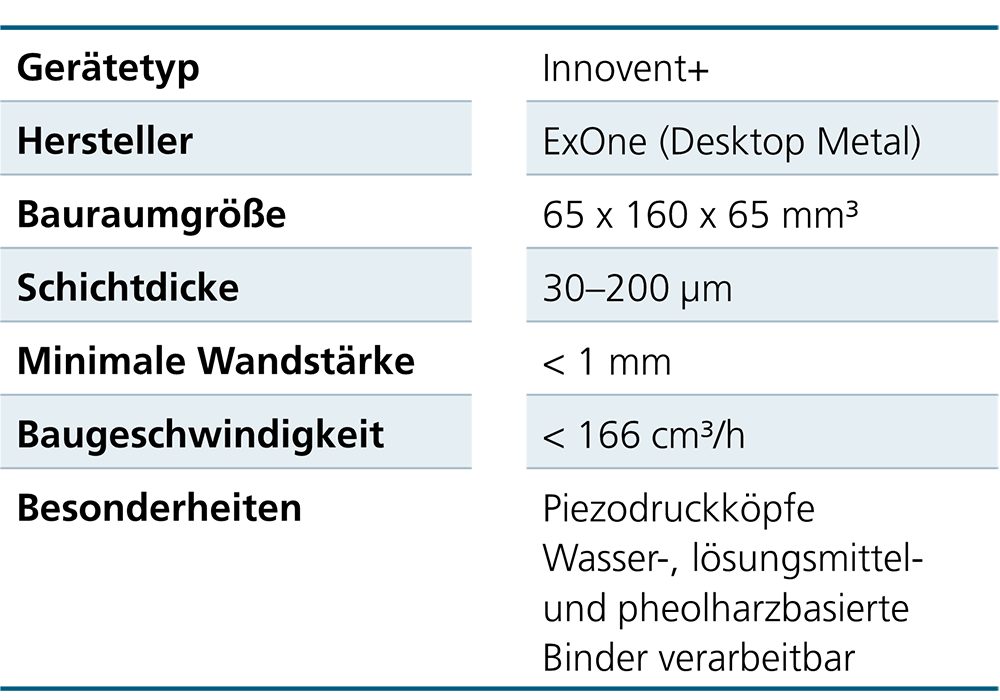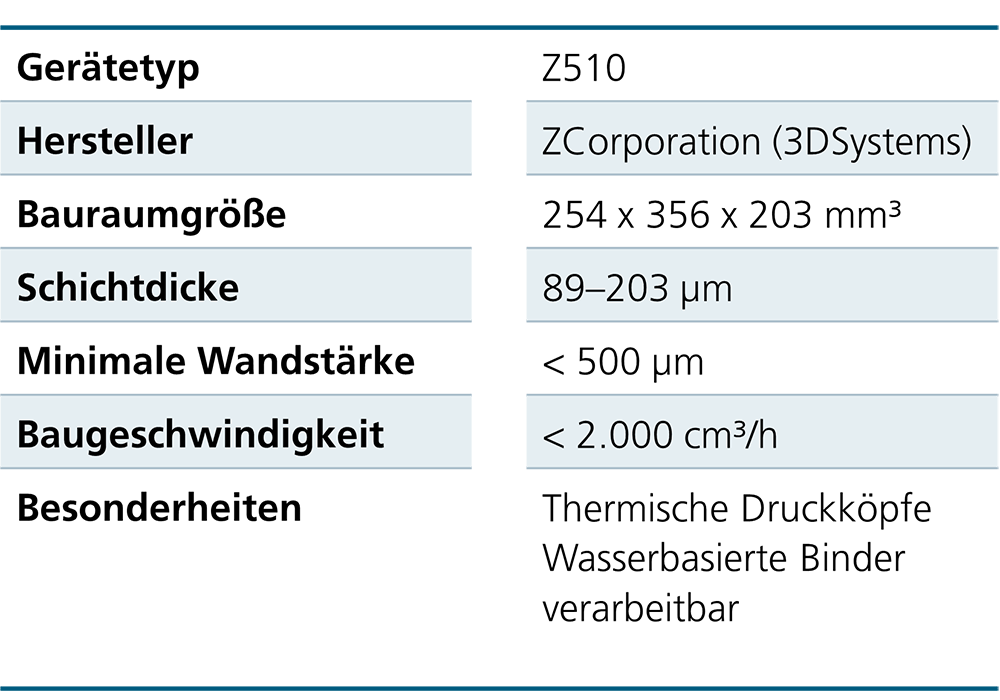
Production

Powder-based methods usually start with a powder bed in which powder granules with good flowability are spread out and bound together in layers. For the most part, the resulting components exhibit porous structures.
With suspension- or feedstock-based methods, the starting materials take the form of suspensions, pastes, inks, or semi-finished products, such as thermoplastic feedstocks, green films, or filaments. Because the particle distribution of the powder in a suspension is more homogeneous than in a powder bed, these shaping methods yield higher green densities, which result in sintered components with denser microstructures and lower surface roughness levels.
Typical to all additive manufacturing methods used for producing ceramic components is the need for post-AM thermal treatment steps such as debinding and sintering, which lend the ceramic component its final ceramic properties.
Fused Filament Fabrication (CerAM FFF)
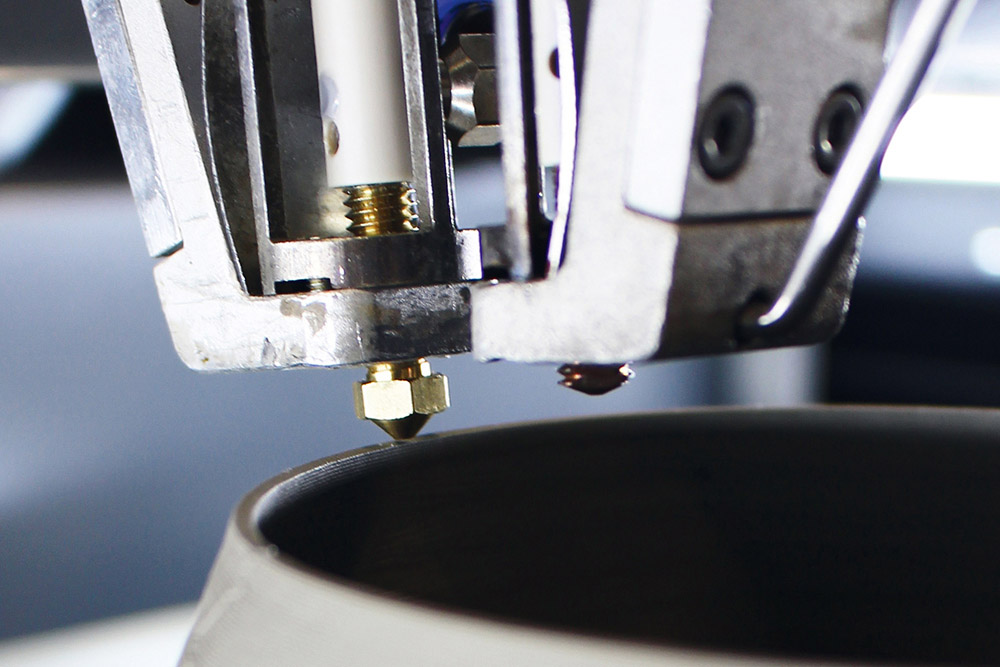
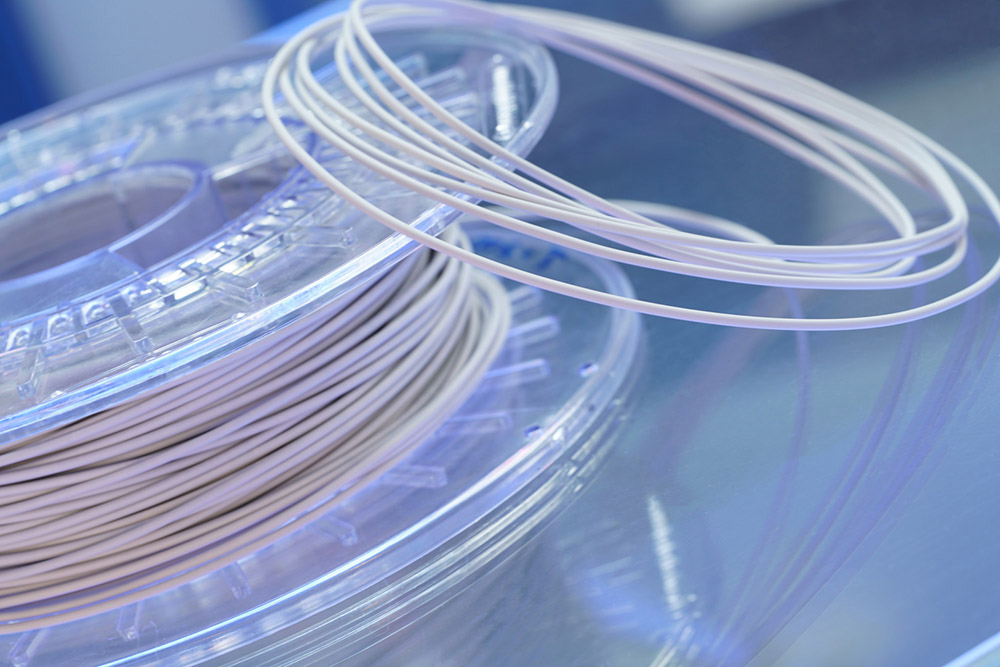

Fused Filament Fabrication (CerAM FFF) uses homogeneous, highly filled thermoplastic materials. These are fed to the print head in the form of filaments with a diameter of 1.75 mm or 2.85 mm, melted there and continuously deposited as a strand. Solidification takes place as a result of the cooling of the deposited material.
Despite a comparatively low resolution, CerAM FFF impresses with a large installation space, high productivity, a wide range of materials, and the possibility of multi-material design. Another significant advantage is the low purchase cost of the equipment required for green part production, which is convincing more and more users. The FFF filaments developed by Fraunhofer IKTS are suitable for processing on standard equipment.
As an outstanding feature, Fused Filament Fabrication, as one of the material extruding processes, offers the possibility to integrate ceramic fibers into the filaments. This allows additive manufacturing of short- to long-fiber-reinforced ceramic matrix composites (CMC) for special applications.
Established materials: aluminum oxide (Al2O3), cordierite, porcelain, cemented carbide, low-temperature fired ceramics (LTCC), liquid-phase sintered silicon carbide (LPS-SiC), sintered silicon carbide (SSiC), silicon nitride/molybdenum disilicide (Si3N4/MoSi2).
Materials under development: nickel-titanium alloy (NiTi), diamond/silicon carbide (diamond/SiC), zirconia (ZrO2), stainless steel (17-4PH), fiber-reinforced silicon carbide (SiCf/SiC)
Services offered
- Production of thermoplastic compounds and filaments based on customer-specific powders
- Component development and component- and material-specific process optimization
- Green or hard machining of additively manufactured components
Vat Photopolymerisation (CerAM VPP)
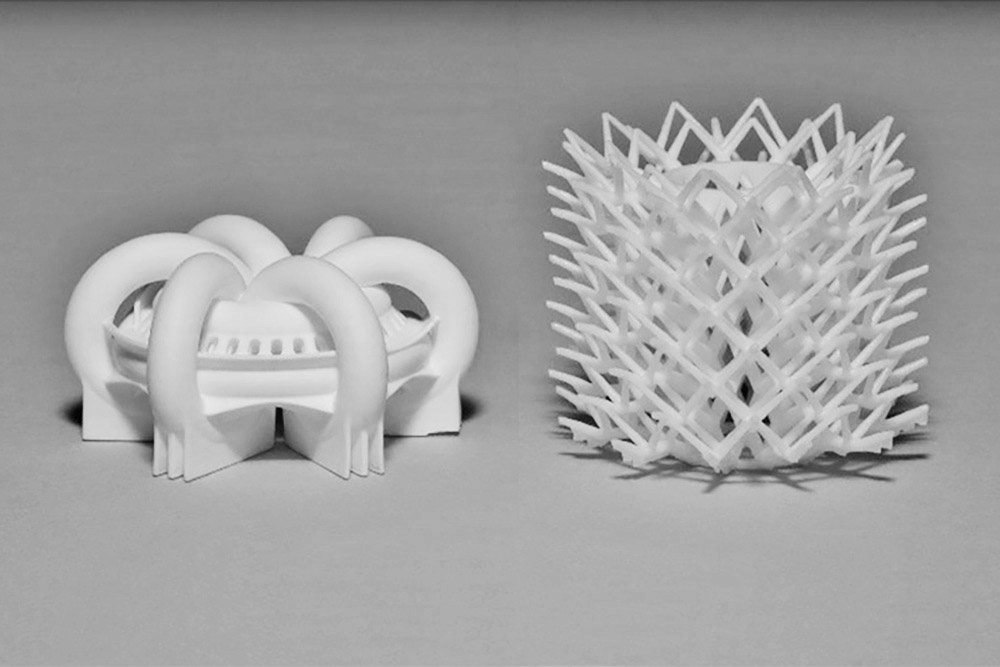
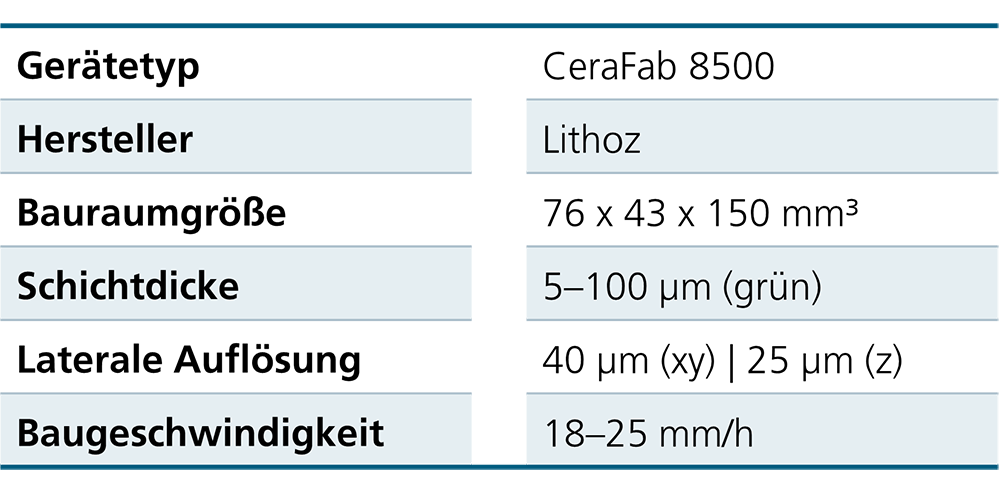
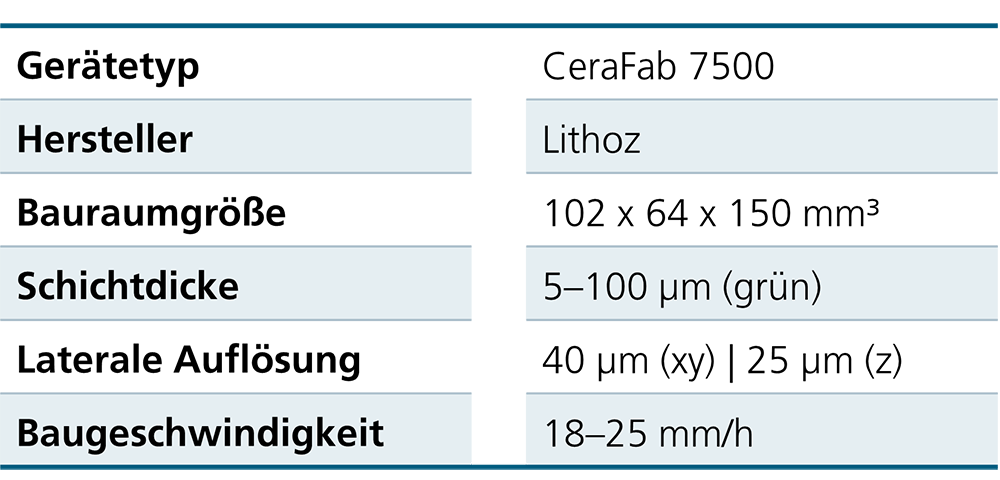
Ceramic additive manufacturing using Vat photopolymerization (CerAM VPP) is based on the principle of stereolithography. In this process, the introduction of light with a defined wavelength initiates the spatially resolved photopolymerization of organic monomer mixtures (suspensions) highly filled with ceramic powder particles. In this process, the introduction of light with a defined wavelength initiates the spatially resolved photopolymerization of organic monomer mixtures (suspensions) highly filled with ceramic powder particles.
The densities achievable after conventional heat treatment of the additively produced green bodies are, for example, at least 99.4 % of the theoretical density for Al2O3 and at least 99.0 % for ZrO2.
Established materials: alumina (Al2O3) - various grades, zirconia (ZrO2), SiAlON silicon nitride (Si3N4), dispersion ceramics (ZTA), hydroxylappatites (HAp), tricalcium phosphate (TCP), silica (SiO2), porcelain, ATZ (not validated).
Materials under development: silicon nitride (Si3N4), silicon nitride for high temperature (HT-Si3N4 up to 1700 °C), aluminum nitride (AlN), dispersion ceramics (ATZ)
Services offered
- Component development and manufacturing based on customer-specific CAD files
- Ceramic and manufacturing-compatible design of components
- Development of light-curable suspensions from customized powders
Laser Power Bed Fusion (CerAM L-PBF)
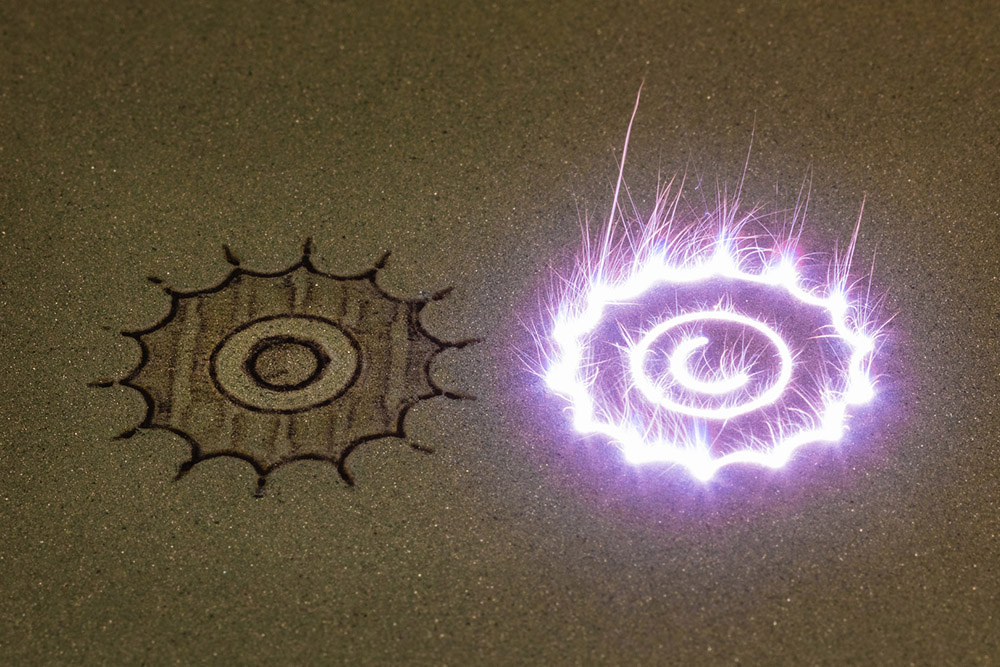
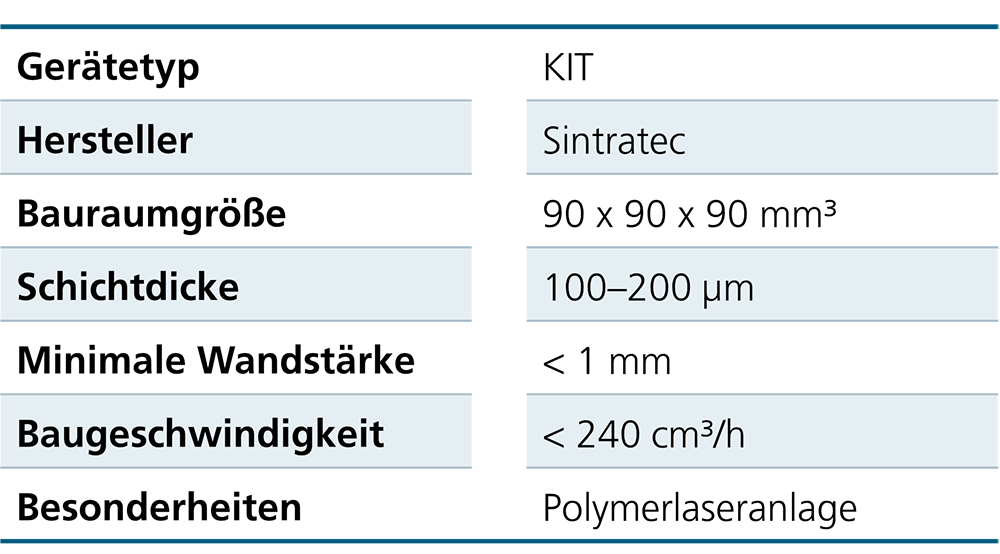
Laser Powder Bed Fusion (CerAM L-PBF) is a powder bed-based process known for its relatively fast production of large-format components with high green part strength compared to binder jetting. The powders are applied in layers over a build area and bonded by means of a laser beam. Since many ceramics cannot be fused, an organic additive is added to the powders, which melts when irradiated by the laser beam and bonds the powder particles together. After the molding process, the components are freed from the unbound powder in a devesting step.
Established materials: Polyamide (PA12)
Materials under development: silicon carbide (SiC), carbide, aluminum oxide (Al2O3), titanium dioxide (TiO2)
Services offered
- Development of starting materials with suitable flowability
- Feasibility studies with material selection
- Development offer incl. training and transfer based on customer-specific CAD data
Binder Jetting (CerAM BJT)
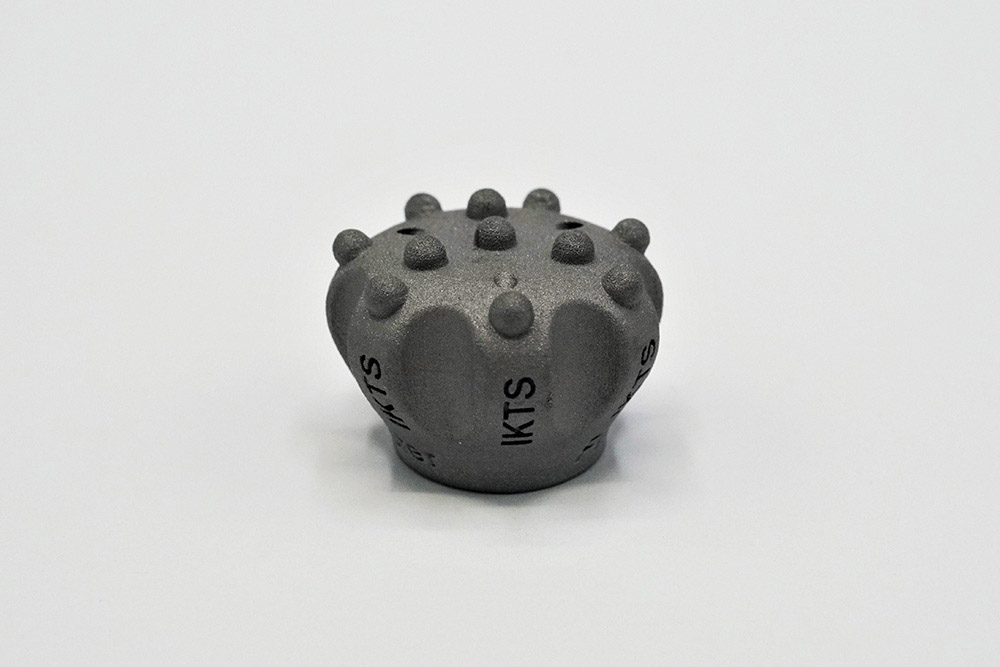
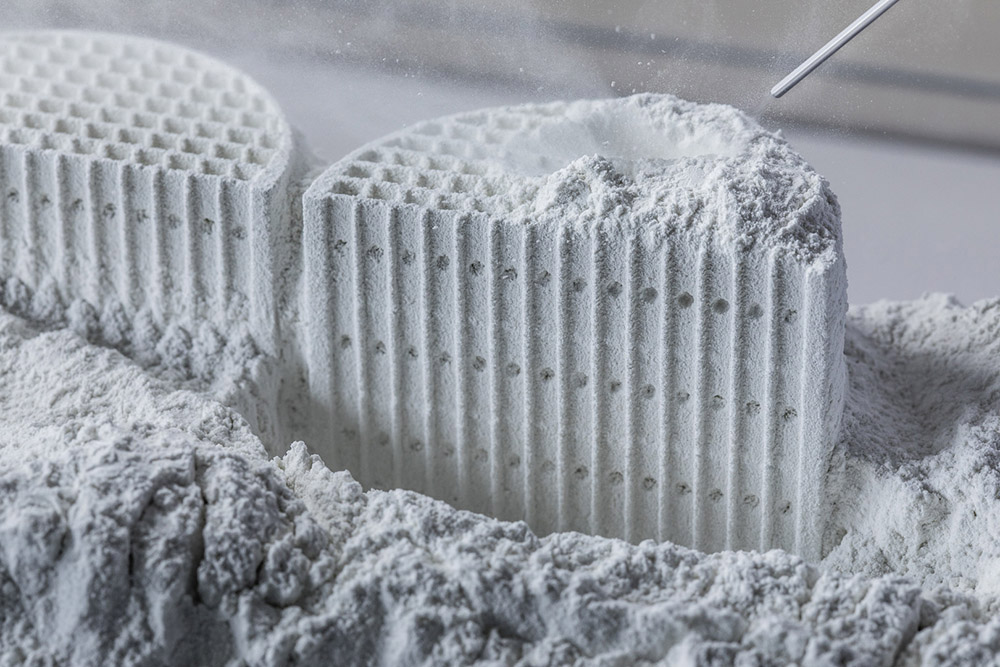
One of the most productive additive manufacturing processes is binder jetting (CerAm BJT). The powder-based process allows the simultaneous production of multiple components or single large-format components. For this purpose, powder is applied in layers over a construction area and selectively bonded by means of a printing fluid. This bonding is usually based on an organic material, which is added to the printing fluid or the powder.
After the printing process, the unwetted powder is removed from the components in a devesting step. The supporting powder bed allows structures to be manufactured without a support structure compared to other additive manufacturing processes. Due to the powder-based process, the resulting green densities are low, depending on the starting material. This offers the possibility of producing porous components with an open-pore structure as well as dense components via liquid phase sintering, infiltration or reaction sintering.
Established materials: Carbide (WC-Co), Alumina (Al2O3), Silicon Carbide (SiC)
Materials under development: cermets (TiCN-based), boron carbide (B4C), cordierite, sandstone, hydroxyapatite (HAp), cubic boron nitride (cBN)
Services offered
- Development of starting materials with suitable flowability
- Feasibility studies with material selection on up to three different binder jetting lines
- Development offer incl. training and transfer based on customer-specific CAD data
